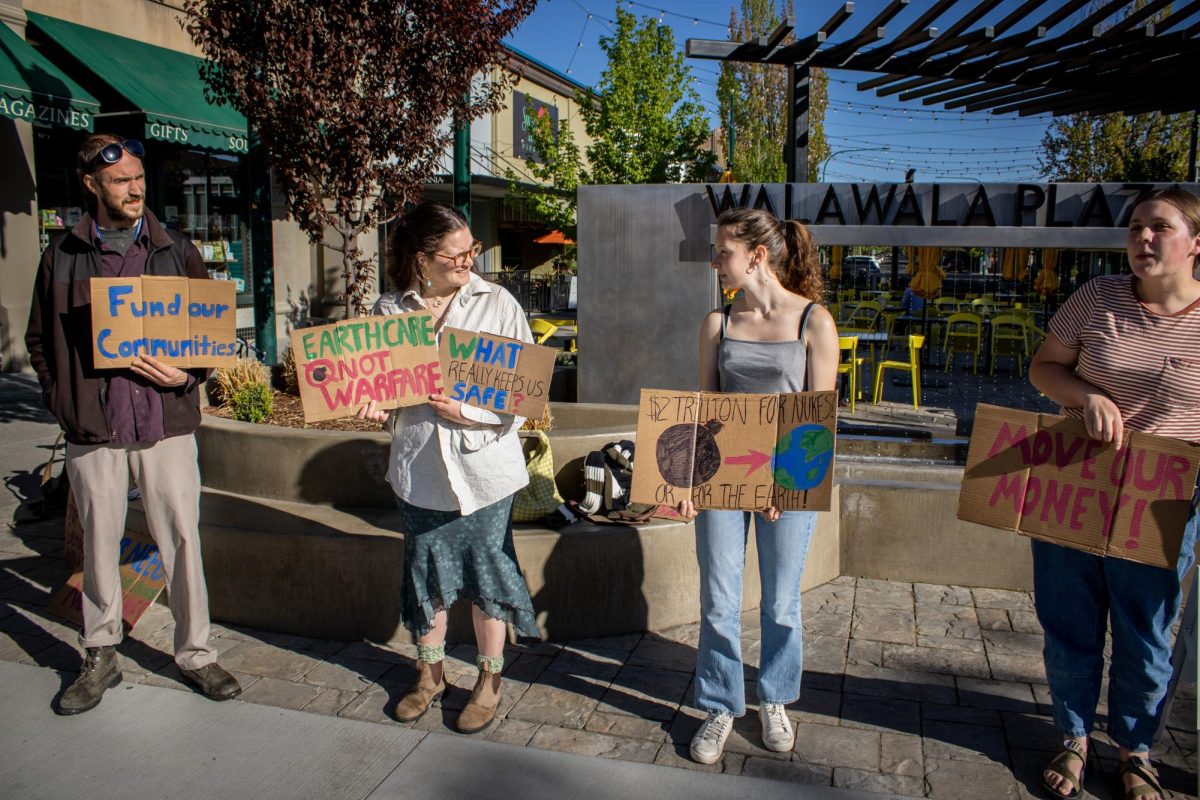As Walla Walla marks the 75th anniversary of the U.S. Army Corps of Engineers, the community reflects on the deep impact of these stewards of problem-solving and innovation. With a legacy intricately tied to the four lower Snake River dams, their anniversary marks not only the passage of time, but also of the Corps’ work to strengthen the Nation’s security by building and maintaining America’s infrastructure and providing military facilities.
The 75-year-milestone marks a period of sustained commitment to managing critical infrastructure components — the four lower Snake River dams are a pivotal part of this — although these dams have been criticized for their impact on salmon populations. The anniversary serves as a moment of reflection on the organization’s historical impact and its ongoing role in shaping the present and future dynamics of the region.
“The land that would become the Walla Walla District was originally part of the [US Army Corps of Engineer] Portland District. In the 1940s, several large construction projects were initiated, projects that would go on to become McNary Lock and Dam, Lucky Peak Dam and the four Lower Snake River Dams. All of these activities, plus the future work that was envisioned, prompted a survey in 1947 of several towns, including Pendleton, Tri-Cities, Spokane, Boise and Walla Walla for the best location of a possible District Office,” according to the U.S. Army Corps of Engineers from the Walla Walla District website.
Public Affairs Specialist Dylan C. Peters, from the U.S. Army Corps of Engineers, shared thoughts about the Corps’ impact both with Whitman and the overall community of Walla Walla. According to Peters, their contributions include critical functions such as career development and food control through the Mill Creek Project.
“The Walla Walla District provides clean reliable hydropower, economically stimulating navigation and a source of career-level employment to Walla Walla and the Snake River Basin. Beyond that, the District also provides critical food control and protection for the City of Walla Walla through the Mill Creek Project,” said Peters.
Expanding its impact beyond the realm of infrastructure, the Walla Walla District fosters several types of engagement with students. Their role in promoting the importance of technical education and inspiring Walla Walla’s youth to pursue engineering careers is a contributor to the development of a diverse engineering workforce for the future.
“The Walla Walla District provides ways of engaging with students at different levels, for example working with local high schools to provide personnel and technical support of EWeek (Engineers Week) which is a formal coalition of 70+ engineering, educational and cultural societies and 50+ corporations and government agencies. EWeek promotes recognition among parents, teachers and students of the importance of a technical education and a high level of math, science and technology literacy, and motivates youth to pursue engineering careers in order to provide a diverse and vigorous engineering workforce,” said Peters.
The imprint of the Army Corps of Engineers is woven into the landscape through the Mill Creek diversion project. Senior Sam Allen is an environmental studies-history major completing an honors thesis on Klamath River dam removal and was an intern last summer with Sustainable Northwest, a non-profit focused on the intersections of resilience and economic development.
Although these physical contours are created to help the community, as Allen notes, the project’s impact on the aquatic environment introduces a whole new dimension of complexity, with ongoing efforts to enhance its compatibility with the delicate balance of nature.
“The biggest way that the Army Corps affects the town of Walla Walla is through the Mill Creek diversion project; the combination of the massive concrete flume that runs through campus, the diversion dam at Rooks Park and the storage works at Bennington Lake. This diversion system creates the recreation area at Bennington Lake, which is one of the only spots around the edge of Walla Walla that isn’t agricultural land. It’s terrible for fish though, even despite efforts to upgrade it to allow salmon and steelhead to get up the canal to spawn above town,” said Allen.
Following the path of the concrete flume shaping Walla Walla, there is more to the Army Corps’ influence: the Snake River dams. It has been a general worry for years now about the risks these dams posed to salmon and that fish ladders might not suffice. It was not, however, taken into consideration that the real harm is to young salmon and not the adults. This oversight threatens the heart of local Indigenous cultures that rely heavily on salmon runs.
“The Snake River dams were built over the objections of fisheries biologists who knew by the 1960s that the dams had a risk of driving salmon and other fish extinct. Public consciousness among non-Indigenous communities hadn’t yet caught up to how bad dams are for salmon; most people likely assumed that because the dams had fish ladders, salmon would be OK. This ignores that the main damage that dams do is to juvenile salmon coming down the river, not adult salmon going back up. Critically, they’re in danger of destroying the salmon runs that local Indigenous peoples depend on for cultural survival,” said Allen.
The Corps, acting as architects of change, have left an indelible mark on Walla Walla’s topography and offer both opportunities for recreation and grappling with the unintended consequences on local ecosystems. As Walla Walla navigates these waters, the story of the Army Corps reveals itself as a complex interplay of progress, responsibility and the delicate balance between human development and the preservation of natural and cultural treasures.





